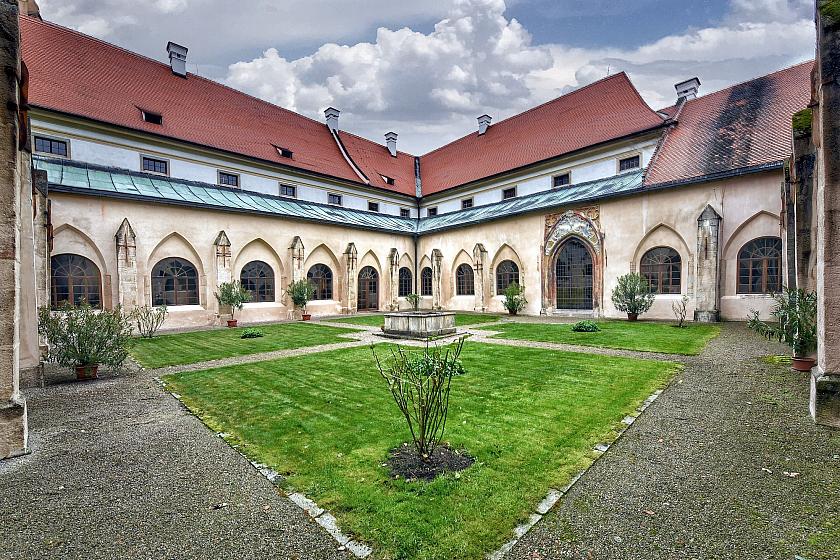Zlatá Koruna Monastery
The Cistercian Monastery in Zlatá Koruna is today considered one of the most valuable complexes of Gothic architecture in Central Europe.
What you can see here
The monastery is largely composed of medieval buildings (church, cloister, chapter hall, Chapel of the Guardian Angels, abbey), which have been baroquely modified.
Currently, it offers two guided tours. The "Monastery with the Baroque Pharmacy" tour provides insight into everyday life in the monastery. The "Sacral Route" featuring the Church of the Assumption of the Virgin Mary focuses on spiritual life. Numerous cultural events (concerts, theater performances, exhibitions, etc.) are held at the monastery. The premises can also be rented for weddings. Additionally, the site houses a branch of the South Bohemian Scientific Library, including a department for manuscripts and old prints.
The monastery complex is accessible without barriers. It offers a partially barrier-free tour ("Monastery with the Baroque Pharmacy"). A barrier-free toilet is also available on the premises.
From history
The monastery was founded in 1263 by King Přemysl Otakar II. The first monks came from the mother monastery in Heiligenkreuz, Austria. The founder gifted Zlatá Koruna extensive lands, which were later augmented by additional donations from other benefactors, enabling the monastery to flourish in the 14th century. In 1420, Zlatá Koruna was attacked by the Hussites, who set fire to the buildings and caused significant damage. In the 17th century, the monastery underwent expensive renovations.
Another period of prosperity occurred in the second half of the 18th century under the last abbot, Bohumír Bylanský, who took great care of both the spiritual and material aspects of monastic life. Unfortunately, in 1785, the promising development of the monastery was abruptly ended by the dissolution decree of Emperor Joseph II, and monastic life ceased there permanently.
- guided tours
- barrier-free
- credit/debit cards
- conference rooms
- school programmes



